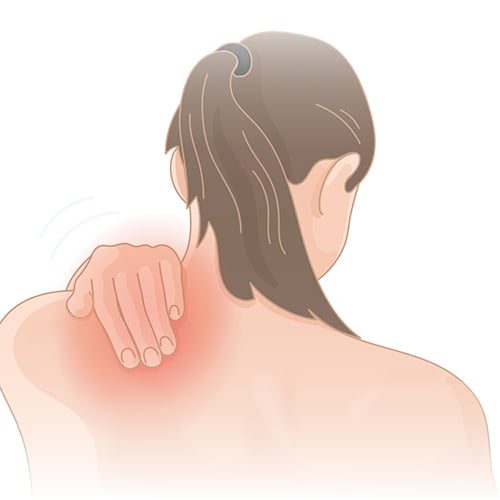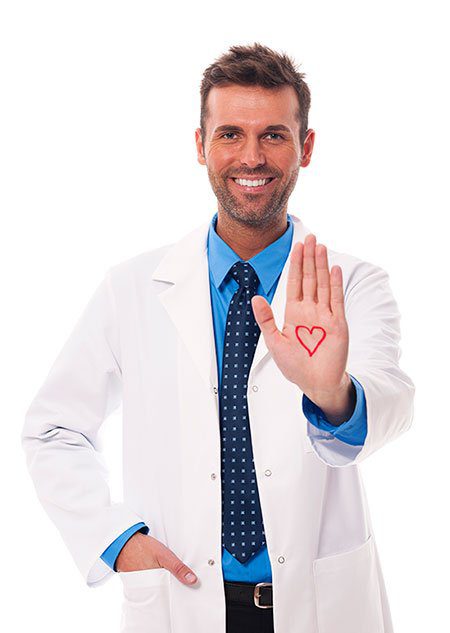Shoulder labral tear treatment in Türkiye
What is a shoulder blade tear?
A shoulder blade tear is a type of shoulder injury. It affects the labrum, the labrum (the cartilage on the edge of the shoulder cavity, a rubber-like tissue that holds the ball of the shoulder joint in place).
The labrum can tear in different places, but the most common area is the front and back where the biceps tendon is. This type of tear is called a SLAP
If the injury is not severe, it may heal with non-surgical treatments such as ice therapy and physical therapy. If these treatments don’t work, or if the tear is serious, surgery will likely be needed .
Although recovery time varies from person to person, it usually takes at least 4 to 6 months. After that, many people can return to normal physical activity.
Symptoms of a shoulder blade tear
A person with a labrum tear is likely to experience a wide range of symptoms. Many of these symptoms are similar to those of other types of shoulder injuries.
Symptoms of a shoulder blade tear include:

- shoulder pain
- The feeling of the shoulder closing or cracking
- Pain with certain movements or positions
- Pain when lifting things, especially over the head
- A feeling of instability and shoulder weakness
Causes of shoulder labrum rupture
The causes of shoulder labrum tears range in severity. They include:
normal aging
Most tears occur when the labrum wears down over time. Labral tearing is a normal part of aging. People over the age of 40 are more likely to develop this condition. In some cases, the upper part of the labrum may wear away as well.
physical injury
Shoulder labrum tears can be caused by physical trauma, such as:
- Falling on an outstretched arm
- Car collision
- Shoulder dislocation
- Move the arm quickly while it is above the shoulder
repetitive movement
Repetitive shoulder movements can lead to shoulder blade tears. This often affects:
- Athletes who throw balls such as “baseball pitchers”
- Athletes who perform overhead movements, such as weightlifters
- Those who do regular physical work
Injury ratings
Shoulder labral tear injuries are classified into 10 different types.
Originally, labral tears were classified into types 1 through 4. Other types, known as extended labral tears, were added over time. Descriptions of these species vary slightly.
The first and second type
In type 1 tear, the labrum is torn but the biceps tendon remains intact. This type of tear is usually seen in the elderly.
The second type also involves a tear in the labrum but the biceps muscle is separated. This type is the most common shoulder blade tear. Depending on the location of the labral tear, type II is divided into three categories:
- 2A (upper front)
- 2B (upper back)
- 2C (upper front and back)
The third and fourth kind
- The third type is “breaking the handle of the bucket.” This is a cephalic tear where the front and back do not stay connected, but the center does not
- Type IV is similar to Type III, but the tear extends to the biceps. This type of tear is associated with shoulder instability.
Fifth and sixth type
- In a type V injury, the tear extends to the anterior lower part of the labrum. It is known as the “Bankart blight”.
- A type VI tear is a bucket handle tear, but the “flap” is torn.
The seventh and eighth kind
The glenoid ligaments are fibrous tissues that keep the shoulder joint together. These ligaments include the superior, middle, and inferior glenoid ligaments.
- In a type VII tear, the injury extends to the middle and inferior glenohumeral ligaments.
- A type VIII is a type 2B tear that extends to the lower posterior part of the labrum.
Type nine and ten
- IX, is a type 2 tear that extends to the labrum.
- Type X, the injury is a type II tear that extends to the posterior lower labrum.
Diagnosing a shoulder blade tear
The doctor will use several methods to diagnose the injury. They may include:
- The person’s medical history: This helps the doctor understand the type of activity that may have caused the injury.
- Physical examination: The doctor watches the shoulder and its range of motion. He also checks the neck and head for any other problems.
- Imaging tests: The doctor may order an MRI or CT scan, which allows the doctor to examine the tissues in the shoulder. He may also order an x-ray if he thinks the bones are injured.
Shoulder labrum fracture treatment
Treatment depends on the severity and location of the injury. It usually starts with non-surgical techniques.
home remedies
Most injuries are treated first with non-surgical methods, and this may be sufficient for recovery.
Non-surgical treatments include home remedies such as:
- Non-steroidal anti-inflammatory drugs (NSAIDs): NSAIDs help reduce pain and swelling. These medicines are available without a prescription.
- Ice application: putting ice on the shoulder will also reduce pain.
- Rest: Rest allows the shoulder to heal. It is the best way to avoid re-injuring the shoulder which speeds up the recovery time.
the physical treatment
Physical therapy begins as soon as the shoulder feels a little better. A physical therapist can show you how to do specific exercises for labrum tears. These exercises focus on improving shoulder flexibility, movement and strength.
surgery
If the injury is severe, or if nonsurgical treatments don’t work, the patient may need surgery.
The most common method is arthroscopy. Through it, the surgeon makes small incisions in the shoulder. Then he inserts a small camera or speculum into the joint . He then uses miniature surgical tools to repair the labral tear.
There are many ways to repair a tear. The method for determining the best method depends on the injury.
Examples of shoulder blade tear surgery include:
- Remove the torn part of the labrum
- Rip removal
- Sew the torn parts
- Lay out the biceps tendon
Postoperative resuscitation of a labral tear
Full range of motion can be expected to be restored following surgery for a labral tear, with proper rehabilitation.
And recovery methods look different for each person. It depends on many factors, including:
- the age
- type of injury
- Public Health
- activity level
- Other shoulder problems
Resuscitation is usually done in the following way:
- 0 to 4 weeks after surgery: A shoulder strap is worn to immobilize the shoulder. The patient does light exercises with a physical therapist.
- 5 to 7 weeks after surgery: While the shoulder heals, you can start strengthening exercises with your physical therapist.
- 8 to 12 weeks after surgery: The patient continues to perform movements to increase range of motion and strength. Biceps strengthening exercises can also be started.
- 12 to 16 weeks after surgery: By this time, your range of motion should have improved. And if the patient is an athlete, he can start sports activities specifically.
- 16 to 20 weeks after surgery: Physical activity can be slowly increased. Many athletes return to their sport after 6 months.
If the patient works in a physically demanding job, he or she may need to be away from work for most of that time.
How can I book for shoulder blade tear treatment in Türkiye?

- Free medical support on the phone: You will have a dedicated representative for your health condition who is always ready to answer your questions.
- Free consultation with a specialist doctor: Your medical representative will consult with a number of doctors and hospitals to find the best possible treatments.
- Free travel visa arrangement: We will contact the embassy in your country to assist you in obtaining a visa to visit Türkiye.
- Free itinerary planning: We will create a schedule for your medical trip to Türkiye.
- Free translation of documents and reports: We will translate medical documents and reports into Turkish on your behalf.
- Free support and monitoring: We will monitor the stages of treatment and be by your side every step of the way.
- Free instant translation: We will be with you during the treatment stages to provide translation between you and the medical team.
- Free accommodation and transportation coordination: We will book accommodation for you and your companions in Türkiye, along with transportation services.
Contact REHABTÜRK doctors for more information about the procedure and to evaluate your medical condition.

